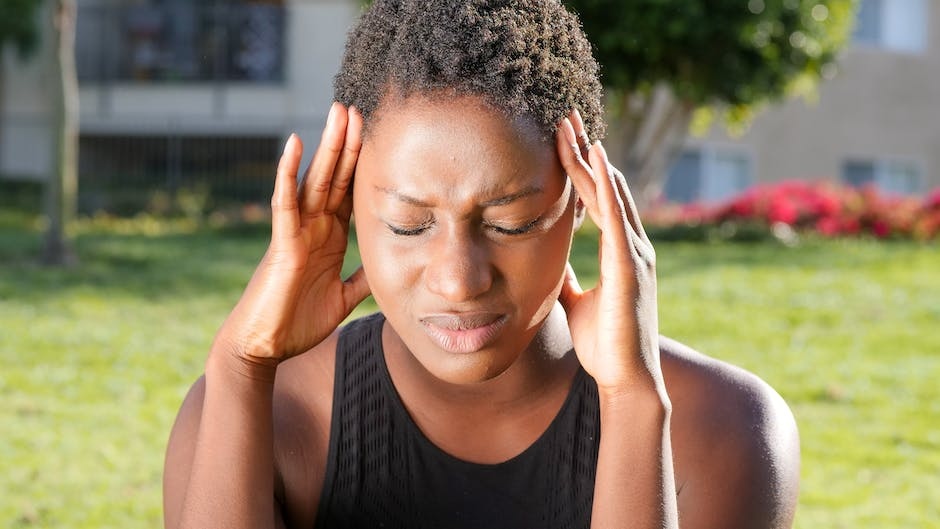Understanding Migraines: Causes, Triggers, and Treatment
If you’ve ever experienced a migraine, you know just how debilitating it can be. The intense pain, sensitivity to light and sound, nausea, and difficulty concentrating can make it difficult to carry out even the simplest of tasks. But what exactly causes migraines, and what can you do to manage them? In this blog post, we’ll take a deeper look at migraines, including their causes, triggers, and treatment options.
What is a Migraine?
A migraine is a neurological condition that is characterized by a severe headache, often accompanied by other symptoms such as sensitivity to light and sound, nausea, vomiting, and difficulty concentrating. While the exact cause of migraines is unknown, it is believed to involve a combination of genetic, environmental, and lifestyle factors.
What Causes Migraines?
While the exact cause of migraines is still unknown, research has identified several factors that may contribute to their development. These include:
- Genetics
- Environmental factors such as changes in weather or air pressure
- Lifestyle factors such as poor sleep habits, dehydration, or stress
- Hormonal changes, particularly in women
- Certain foods or drinks, such as caffeine, alcohol, or processed foods
- Sensory stimuli such as bright lights or loud noises
What Triggers Migraines?
While migraines can be caused by a variety of factors, some individuals may be more sensitive to certain triggers. These can include:
- Stress
- Changes in sleep patterns
- Hormonal changes, particularly in women
- Certain foods or drinks
- Sensory stimuli such as bright lights or loud noises
How are Migraines Treated?
While there is no cure for migraines, there are several treatment options available to manage symptoms and prevent future episodes. These can include:
- Medications such as pain relievers, triptans, or anti-nausea drugs
- Lifestyle changes such as maintaining a regular sleep schedule, staying hydrated, and managing stress
- Alternative therapies such as acupuncture or massage
If you experience frequent migraines, it is important to talk to your healthcare provider to develop a treatment plan that works best for you.
Conclusion
While migraines can be incredibly debilitating, there are several ways to manage symptoms and prevent future episodes. By understanding the causes and triggers of migraines, and working with your healthcare provider to develop a treatment plan, you can take control of your health and improve your quality of life.
Why Peppermint Tea is Great for Migraines
Are you someone who suffers from migraines? If so, you’re not alone. Migraines affect millions of people worldwide, and finding relief can be a challenge. However, there is a natural remedy that you may want to consider: peppermint tea.
The Benefits of Peppermint Tea

Peppermint tea has been used for centuries for its numerous medicinal benefits. Here are some of the ways it can help with migraines:
- Anti-inflammatory properties: The active compounds found in peppermint, such as menthol and rosmarinic acid, have been shown to have potent anti-inflammatory effects. This means that peppermint tea can help reduce inflammation in the body, which can be especially helpful for individuals who experience migraines.
- Analgesic properties: Peppermint tea also has analgesic properties, which means it can help relieve pain. This is due to the presence of menthol, which acts as a natural pain reliever. When consumed, peppermint tea can help relieve headaches and migraines by reducing inflammation and providing natural pain relief.
- Calming properties: Peppermint tea is also known for its calming properties, which can be helpful for individuals who experience migraines. The aroma of peppermint tea has been shown to have a calming effect on the body, which can help reduce stress and tension. This can be beneficial for people who suffer from migraines, as stress and tension are often triggers for these types of headaches.
How to Make Peppermint Tea
Making peppermint tea is easy. Here’s how:
- Boil water in a kettle or on the stove.
- Place a peppermint tea bag or loose leaf tea in a mug.
- Pour the hot water over the tea.
- Let the tea steep for 5-10 minutes.
- Remove the tea bag or strain out the loose leaf tea.
- Enjoy!
Conclusion
Overall, peppermint tea is a natural remedy that can help relieve the symptoms of migraines. Its anti-inflammatory, analgesic, and calming properties make it an excellent choice for those looking for a natural solution to their migraine pain. So the next time you feel a migraine coming on, consider brewing a cup of peppermint tea and see if it helps.
Peppermint Tea for Migraines: A Natural Remedy?
Migraines are a debilitating and often chronic condition that affects millions of people worldwide. The intense pain, nausea, and sensitivity to light and sound can make it difficult to carry out daily tasks or enjoy life to the fullest. While there are many pharmaceutical options available to manage migraines, some people prefer a more natural approach. One such remedy that has been used for centuries is peppermint tea.
Peppermint tea is a natural remedy that has been used for centuries to alleviate various health issues, including headaches. But can it really help with migraines? Let’s take a closer look at the research.
What Makes Peppermint Tea Effective for Migraines?
The active compound in peppermint, menthol, has a calming effect on the muscles and nerves, which can help reduce the intensity and frequency of migraine headaches. Additionally, peppermint tea also has anti-inflammatory and analgesic properties, which can help reduce pain and inflammation associated with migraines.
Research on Peppermint Oil for Migraines
A study published in the International Journal of Clinical Practice found that peppermint oil applied to the forehead and temples was effective in reducing the symptoms of migraine headaches in 15 out of 35 patients. Another study published in the American Journal of Gastroenterology found that peppermint oil was effective in reducing nausea and vomiting in patients with migraine-associated vertigo.
Drinking Peppermint Tea for Migraines
Drinking peppermint tea can also help alleviate other symptoms associated with migraines, such as sensitivity to light and sound, nausea, and vomiting. It is important to note that while peppermint tea may be helpful in alleviating migraine symptoms, it is not a substitute for medical treatment and should be used in conjunction with other treatments and medications as recommended by a healthcare professional.
How to Make Peppermint Tea
Making peppermint tea is easy and can be done using fresh or dried peppermint leaves. Here is a simple recipe:
– Boil 1 cup of water
– Add 1 tablespoon of fresh or dried peppermint leaves to a tea infuser or tea ball
– Pour the hot water over the peppermint leaves and let steep for 5-10 minutes
– Remove the infuser or tea ball and enjoy your freshly brewed peppermint tea
Conclusion
Peppermint tea is a natural remedy that has been used for centuries to alleviate various health issues, including headaches and migraines. While the research on its effectiveness in treating migraines is limited, the active compound in peppermint, menthol, has a calming effect on the muscles and nerves, which can help reduce the intensity and frequency of migraine headaches. Drinking peppermint tea can also help alleviate other symptoms associated with migraines, such as sensitivity to light and sound, nausea, and vomiting. However, it is important to note that peppermint tea is not a substitute for medical treatment and should be used in conjunction with other treatments and medications as recommended by a healthcare professional.
Peppermint Tea for Migraine Relief: A Natural Remedy
Migraines can be debilitating, causing intense pain and discomfort that can disrupt your daily routine. While there are medications available to treat migraines, they often come with side effects that can be just as unpleasant as the migraine itself. This is why many people turn to natural remedies, such as peppermint tea, to alleviate their symptoms.
Peppermint tea has been used for centuries for its medicinal properties, including its ability to relieve migraines. Here are some key things to know about peppermint tea and its benefits for migraine relief:
How to Make Peppermint Tea
Peppermint tea is easy to make at home using fresh or dried peppermint leaves. Simply steep a tablespoon of peppermint leaves in hot water for 5-10 minutes. Strain the tea and enjoy. For a stronger flavor, add more leaves or let the tea steep for a longer period.
Recommended Dosage for Peppermint Tea
For migraine relief, it is recommended to drink 1-2 cups of peppermint tea per day. However, it’s important to note that peppermint tea may interact with certain medications, so it’s best to consult with a healthcare professional before adding it to your migraine treatment plan.
Best Practices for Preparing Peppermint Tea
To get the most out of your peppermint tea, it’s important to use filtered water and avoid boiling the water to maintain the tea’s flavor and therapeutic properties. Adding honey or lemon to your tea can enhance its taste and provide additional health benefits.
Side Effects of Peppermint Tea
While peppermint tea is generally safe to consume, it’s important to drink it in moderation and not to exceed the recommended dosage. Excessive consumption may lead to adverse effects, such as heartburn, diarrhea, or allergic reactions.
In conclusion, peppermint tea is a natural and effective remedy for migraine relief. Its soothing properties and pleasant taste make it a popular choice among those seeking a natural alternative to traditional medications. However, it’s important to consult with a healthcare professional before adding peppermint tea to your treatment plan and to drink it in moderation to avoid any potential side effects. Give it a try and see if it works for you!


Leave a Reply